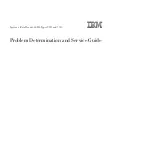
Power Supply Redundancy
Power supply redundancy functions identically for AC and DC configured systems. When considering power
supply redundancy you need to take several things into consideration:
•
AC power supplies are all single phase and have a single input for connectivity to customer power source
(a rack PDU such as the Cisco RP Series PDU or equivalent).
•
The number of power supplies required to power a chassis varies depending on the following factors:
◦
The total "Maximum Draw" required to power all the components configured within that
chassis
—
such as I/O modules, fans, blade servers (CPU and memory configuration of the blade
servers).
◦
The Desired Power Redundancy for the chassis. The supported power configurations are
non-redundant, N+1 redundancy (or any requirement greater than N+1), and grid redundancy.
To configure redundancy, see the
Configuration Guide
for the version of Cisco UCS Manager that you are
using. The configuration guides are available at the following URL:
http://www.cisco.com/en/US/products/
ps10281/products_installation_and_configuration_guides_list.html
.
Non-redundant Mode
In non-redundant mode, the system may go down with the loss of any supply or power grid associated with
any particular chassis. We do not recommend running a production system in non-redundant mode. To operate
in non-redundant mode, each chassis should have at least two power supplies installed. Supplies that are not
used by the system are placed into standby. The supplies that are placed into standby depends on the installation
order (not on the slot number). The load is balanced across active power supplies, not including any supplies
in standby.
When using Cisco UCS Release 1.3(1) or earlier releases, small configurations that use less than 25000W
may be powered up on a single power supply. When using Cisco UCS Release 1.4(1) and later releases, the
chassis requires a minimum of 2 power supplies.
In a non-redundant system, power supplies can be in any slot. Installing less than the required number of
power supplies results in undesired behavior such as server blade shutdown. Installing more than the
required amount of power supplies may result in lower power supply efficiency. At most, this mode will
require two power supplies.
Note
N+1 Redundancy
The N+1 redundancy configuration implies that the chassis contains a total number of power supplies to satisfy
non-redundancy, plus one additional power supply for redundancy. All the power supplies that are participating
in N+1 redundancy are turned on and equally share the power load for the chassis. If any additional power
supplies are installed, Cisco UCS Manager recognizes these
“
unnecessary
”
power supplies and places them
on standby.
If a power supply should fail, the surviving supplies can provide power to the chassis. In addition, UCS
Manager turns on any "turned-off" power supplies to bring the system back to N+1 status.
Cisco UCS 5108 Server Chassis Installation Guide
32
Overview
Power Supplies





































